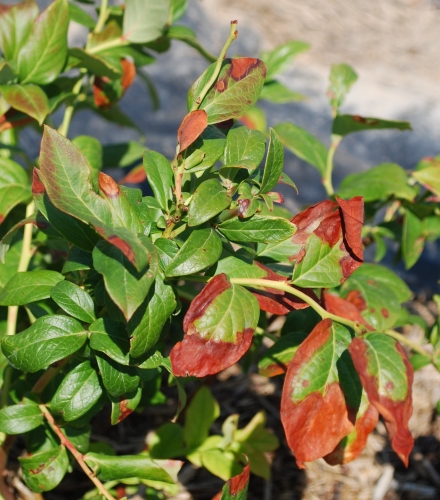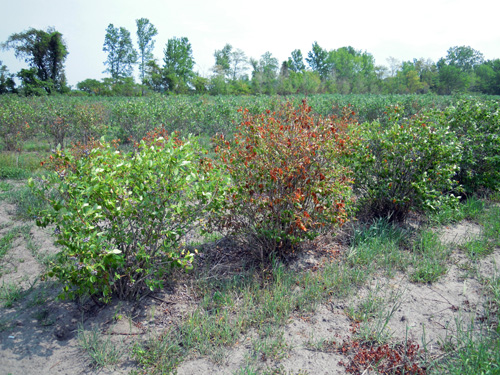Drought symptoms in blueberries
Recognizing water stress in blueberries may allow you to recover without the loss of growth or crop this year and next.
For the past several weeks many blueberry growers have been seeing signs of water stress and drought in their blueberry fields. Experienced blueberry growers recognize the symptoms of drought and lack of water. Less experienced growers are perplexed as to what disease is killing their plants. It is important to be able to recognize the symptoms of water stress and drought. A factsheet on drought stress symptoms in blueberries has been posted at the Michigan Blueberry Facts website.

Marginal leaf burn is a common symptom of drought stress in young plants.
Young blueberry plants are especially vulnerable because their roots tend to be shallow and the top soil depths dry out most quickly. Also, young plants create little shade, so the soil becomes very hot. As soils dry out lack of water causes edges and tips of blueberry leaves to dry out and turn brown. This symptom is often confused with burn from a pesticide spray.

The two drought stressed blueberry bushes show symptoms next to a less
stressed bush. The healthy looking bush had shriveled fruit.
Once most of the available soil water has been depleted, wholesale death of the leaves followed by shriveling of the current season shoots occurs. This can be confused with phomopsis cane blight, but experienced growers can easily tell the difference. On mature plants, the fruit is shriveling as the plants use the water in the berries to maintain the health of the leaves. When the ground dries out, severely drought-stressed bushes look dead or almost dead.
Experienced blueberry growers have been irrigating blueberries since mid-May. A field of mature blueberries with a cover crop uses water at a rate close to a quarter of an inch of water per day. Under these hot conditions, many growers are struggling to maintain irrigation in their blueberries.
Additional information:
- MSU Extension's Drought Resources



 Print
Print Email
Email